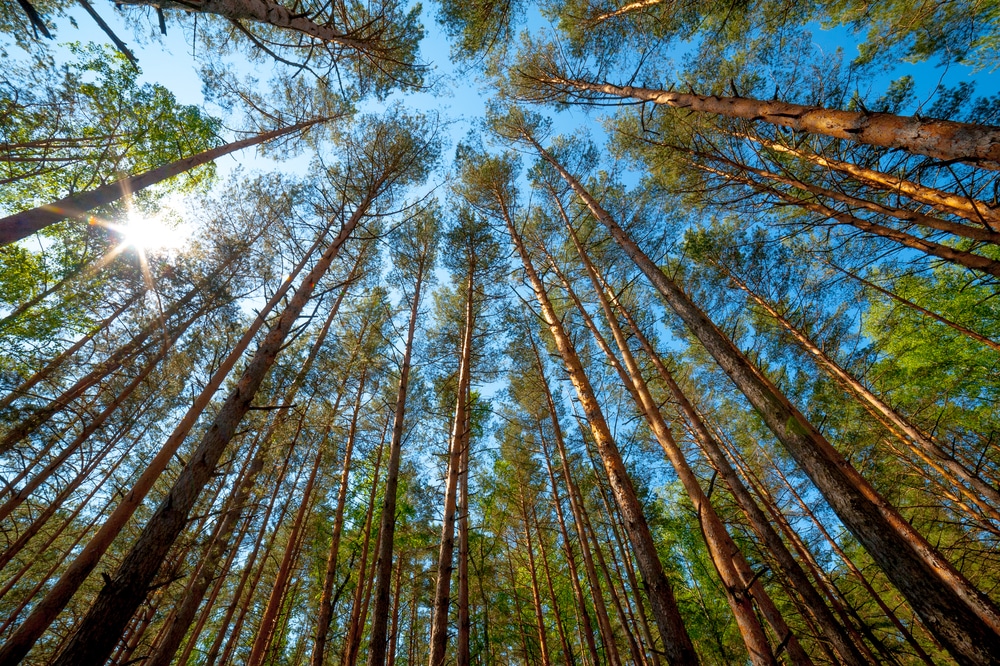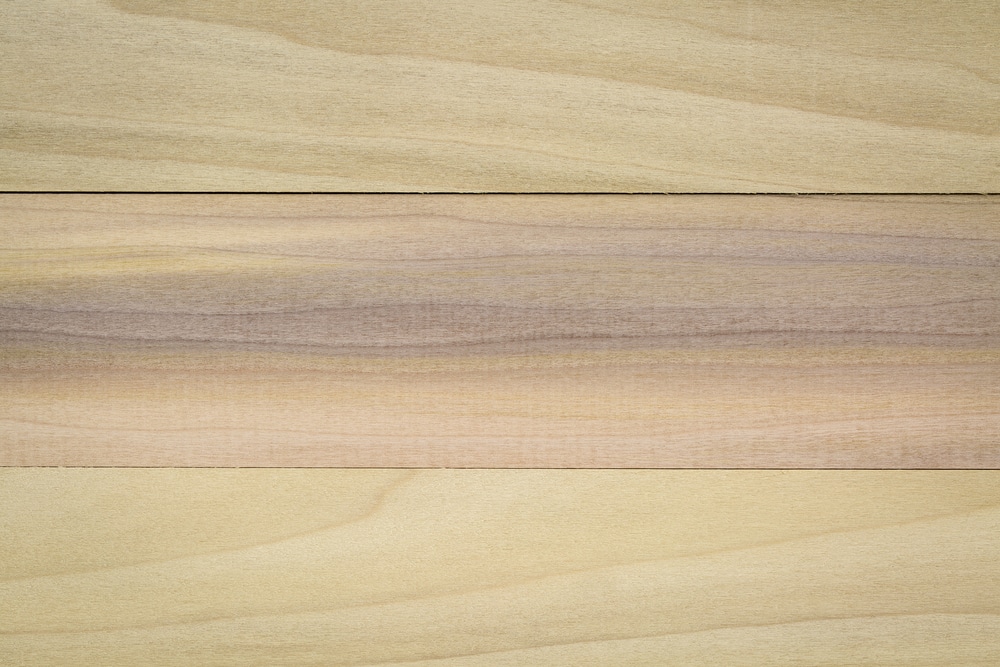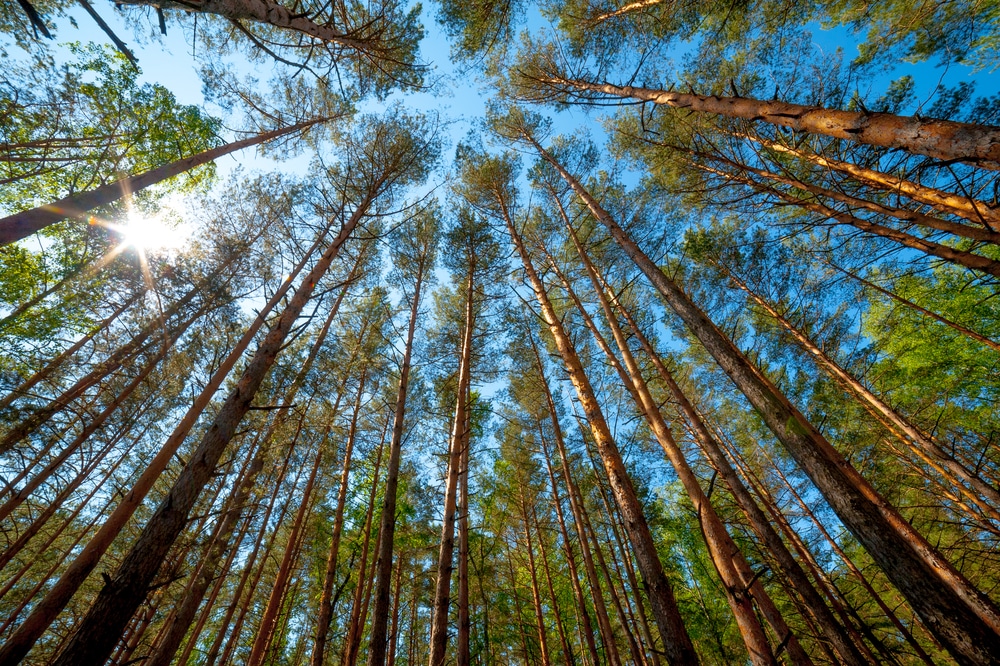Pine and poplar wood are both common and affordable woodworking materials – and at first glance, they seem quite similar to one another! This can make it difficult to decide which wood is best for your project.
Attempting to read up on the subtle differences between these two woods can quickly prove to be a complicated and time-consuming task.
Don’t worry, we’re here to help! In this article, we’ll cover:
- Everything you need to know about pine wood
- Everything you need to know about poplar wood
- How they are different from one another
- The kinds of projects best suited to each wood.
Let’s get started!

Table of Contents
Deep Dive into Pine Wood
Pine is a softwood, which can mislead some people. While softwoods tend to be softer and weaker than hardwoods, whether a wood is a hardwood or a softwood ultimately comes down to the kind of tree the wood is from.
Hardwoods tend to be stronger than softwoods due to their structure, but there are cases in which softwoods are stronger than some hardwoods.
Pine actually comes in softer and harder varieties, some of which are comparable or even superior to some varieties of poplar on some measures of strength and durability.
Sugar pine, western white pine, and eastern white pine are the most popular softer varieties of pine. They have low density, an even grain, and typically a pale, ‘clean’ color ranging from light brown to almost white.
The common uses of a material can provide some insight into its wood characteristics. Soft pines are often used for making containers, musical instruments, matches, carvings, and boats.
Hard pines tend to have a straight grain and range in color from a reddish brown to a yellowish white. Hard pines are typically used in more heavy-duty construction scenarios, such as bridges and beams.
When it comes to outdoor applications, pine is not inherently suitable as it is prone to moisture, heat, light, and insect damage. However, treated pine is highly resistant to the effects of these, and is widely available.
Pros:
- Durable
- Appealing natural look
- Easy to finish
- Strong
- Cheap.
Cons:
- More difficult to cut and shape
- Untreated pine inappropriate for outdoor furniture
- Difficult to evenly stain due to high resin content.
Exploring Poplar Wood

Poplar wood can be misleading in much the same way that pine can, due to its classification as a hardwood. Many varieties of poplar wood are in fact relatively soft wood varieties.
Poplar woods tend to range in color from a yellowish brown to a pale white, with traces of other colors such as red, green, and purple.
In some cases, it takes on a much darker and more colorful form known as rainbow poplar, due to its susceptibility to mineral staining especially when exposed to light.
Containers, furniture frames, and paper are common uses of poplar. Poplar suitably treated for outdoor use is far less common than in the case of pine, so it’s best to reserve this wood for indoor pieces.
Pros:
- Easy to cut and shape
- Lightweight
- Eco-friendly
- Versatile indoor material.
Cons:
- More expensive
- Less durable
- Not suitable for the outdoors, prone to insect attack
- Difficult to stain evenly
- Usually requires paint to look good.
Comparative Analysis: Pine vs. Poplar
Some varieties of pine outshine poplar in some measures of strength and durability.
For example, longleaf pine has a significantly higher Janka hardness score than yellow poplar – meaning significantly more force is required to dent it.
Longleaf pine also has a significantly higher crushing strength, meaning it requires more force to crush it.
Pine is also typically more durable than poplar, including when it comes to resilience to insects.
This makes it much more suitable for outdoor furniture as well as other projects that require durability, such as structures that need to retain strength for a long time.
Pines are typically easy to glue and finish, although they can contain a lot of natural resin which can clog up tools.
Poplar is much easier to cut and shape than pine due to being softer. One downside of poplar is that it can be more difficult to smooth, often having ‘fuzzier’ or ‘fluffier’ surfaces upon being cut.
Cost Considerations
Hardwoods are usually more expensive than softwoods. While pine and poplar defy expectations when it comes to the strength of hardwoods and softwoods, pine is indeed typically cheaper than poplar.
There are exceptions, with some poplar varieties sometimes being cheaper in some region. However, as a general rule, pine will be cheaper.
The differences in price are usually marginal when it comes to small amounts of wood, so cost is primarily a factor when it comes to very tight budgets or large projects that require a lot of wood as the small differences in the price of each piece will start to add up.
Neither poplar nor pine is usually of much concern when it comes to availability and demand. Both kinds of wood are known to be popular and are therefore made widely available!
Sustainability and Environmental Impact
Both pine and poplar land on the more sustainable end of the spectrum, although things are a little more complicated than that.
You should ensure that you are sourcing your wood from countries that encourage sustainable practices, and companies that are not involved in illegal deforestation practices.
When it comes to responsibly sourced wood, the competition between the two is close. However, some varieties of pine may be less sustainable than some varieties of poplar.
For example, the longleaf pine tree is on the IUCN red list of endangered species, while neither yellow poplar nore white poplar are considered to be of concern.
Project-Specific Recommendations
Ideal Uses for Pine
- Indoor furniture frames
- Outdoor furniture frames (if pressure-treated)
- Flooring
- Decking
- Non-painted wooden items.
Ideal Uses for Poplar
- Inexpensive items produced in large quantities
- Interior finishings (e.g. window casings)
- Painted furniture
- Painted decorative wooden pieces.
Final Words
Despite their surface-level similarities, pine and poplar differ in many complicated ways. It’s easiest to compare their suitability to different projects by considering a handful of basic factors.
Pine is usually cheaper, stronger, and more durable. It also usually looks better than poplar in its natural color and texture, although it is suitable for staining and painting too!
It has a wider range of uses, including outdoor and heavy-duty applications.
Poplar is slightly more expensive. It is also softer, which makes it mostly easier to work with but more difficult to finish and maintain long-term due to its lack of durability and its complicated texture.
It is usually slightly better from a sustainability perspective. It is more well-suited to projects that don’t require as much durability.
Poplar looks best painted, with most people preferring pine over poplar when it comes to natural cosmetics (with the exception of rainbow poplar, which is sought for its unique appearance!).
